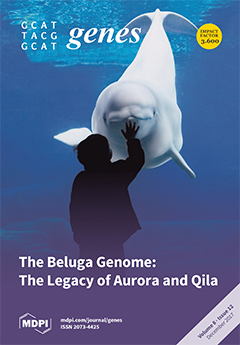The sex determination in gymnosperms is still poorly characterized due to the lack of genomic/transcriptome resources and useful molecular genetic markers. To enhance our understanding of the molecular mechanisms of the determination of sexual recognition of reproductive structures in conifers, the transcriptome of male and female conelets were characterized in a Chinese endemic conifer species,
Pinus bungeana Zucc. ex Endl. The 39.62 Gb high-throughput sequencing reads were obtained from two kinds of sexual conelets. After de novo assembly of the obtained reads, 85,305 unigenes were identified, 53,944 (63.23%) of which were annotated with public databases. A total of 12,073 differentially expressed genes were detected between the two types of sexes in
P. bungeana, and 5766 (47.76%) of them were up-regulated in females. The Kyoto Encyclopedia of Genes and Genomes (KEGG) enriched analysis suggested that some of the genes were significantly associated with the sex determination process of
P. bungeana, such as those involved in tryptophan metabolism, zeatin biosynthesis, and cysteine and methionine metabolism, and the phenylpropanoid biosynthesis pathways. Meanwhile, some important plant hormone pathways (e.g., the gibberellin (GA) pathway, carotenoid biosynthesis, and brassinosteroid biosynthesis (BR) pathway) that affected sexual determination were also induced in
P. bungeana. In addition, 8791 expressed sequence tag-simple sequence repeats (EST-SSRs) from 7859 unigenes were detected in
P. bungeana. The most abundant repeat types were dinucleotides (1926), followed by trinucleotides (1711). The dominant classes of the sequence repeat were A/T (4942) in mononucleotides and AT/AT (1283) in dinucleotides. Among these EST-SSRs, 84 pairs of primers were randomly selected for the characterization of potential molecular genetic markers. Finally, 19 polymorphic EST-SSR primers were characterized. We found low to moderate levels of genetic diversity (
NA = 1.754;
HO = 0.206;
HE = 0.205) across natural populations of
P. bungeana. The cluster analysis revealed two distinct genetic groups for the six populations that were sampled in this endemic species, which might be caused by the fragmentation of habitats and long-term geographic isolation among different populations. Taken together, this work provides important insights into the molecular mechanisms of sexual identity in the reproductive organs of
P. bungeana. The molecular genetic resources that were identified in this study will also facilitate further studies in functional genomics and population genetics in the
Pinus species.
Full article






